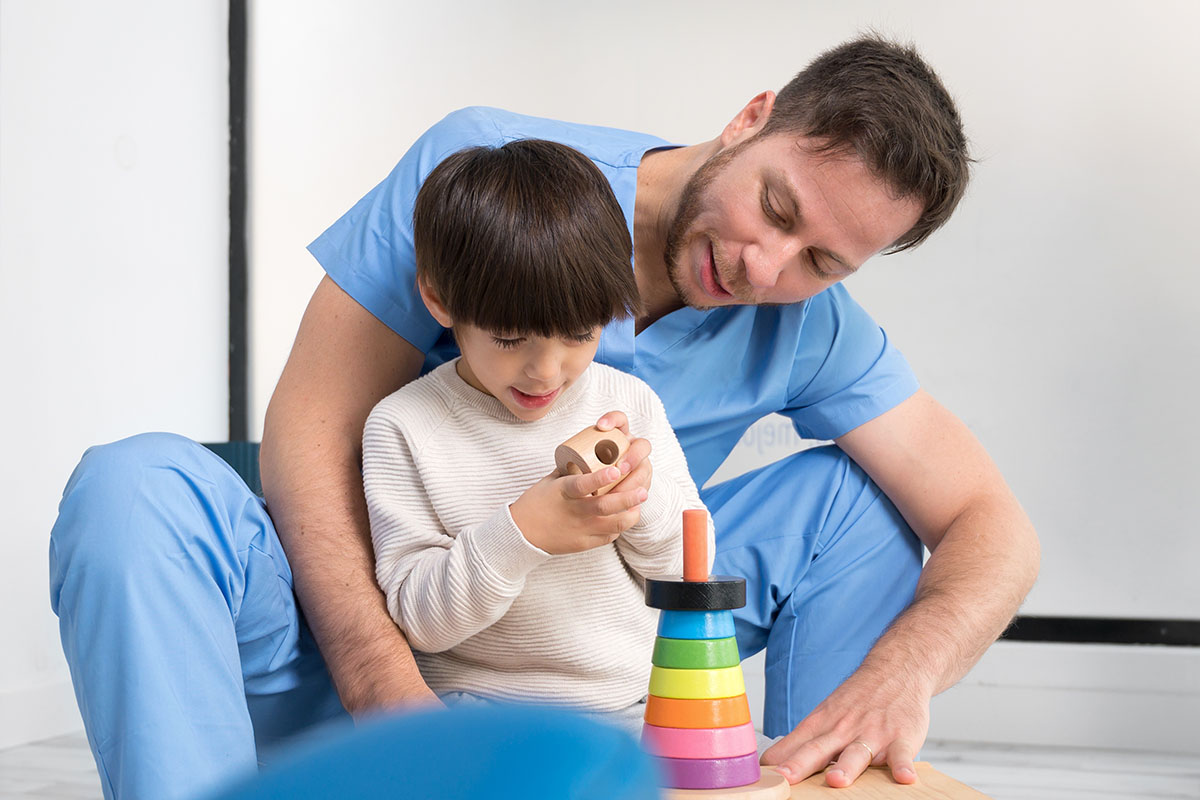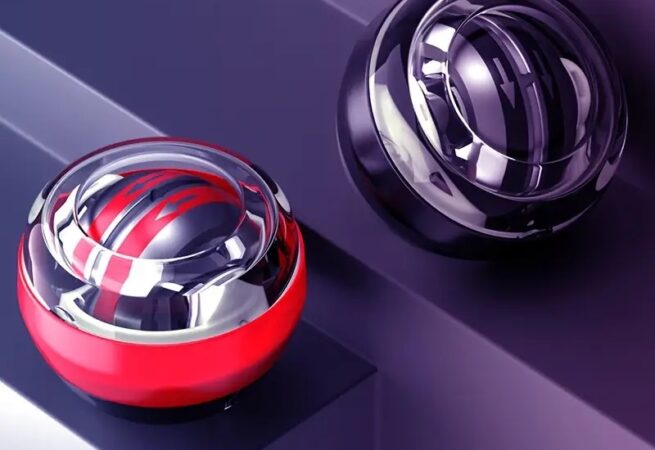

Understanding Spastic Cerebral Palsy: Symptoms and Treatment Options Explained
Understanding Spastic Cerebral Palsy
Spastic cerebral palsy is the most common form of cerebral palsy, affecting about 80{eb987918cafc278b5e8fac67ff1b7a1628241d0a36833533b38f5df2460ecaff} of diagnosed individuals. It results from brain damage to the motor cortex occurring before, during, or shortly after birth. This condition leads to muscle stiffness, exaggerated reflexes, and jerky movements.
Key Features
- Muscle Stiffness: Stiff muscles primarily affect the legs, arms, and back. These muscles can become overactive, causing difficulty with voluntary movements.
- Exaggerated Reflexes: Also known as hyperreflexia, exaggerated reflexes are common. This condition results in involuntary muscle contractions during activities.
- Jerky Movements: Individuals exhibit sudden, involuntary movements. Those affected may have difficulty maintaining balance and coordinating activities.
Subtypes of Spastic Cerebral Palsy
- Spastic Hemiplegia: Affects one side of the body. For example, the left arm and left leg show stiffness while the right side remains relatively unaffected.
- Spastic Diplegia: Primarily impacts the legs. Individuals may walk with a scissoring gait, where the knees cross due to muscle tightness.
- Spastic Quadriplegia: Involves all four limbs. More severe, it may include other conditions like speech or vision impairments.
Diagnosis and Early Signs
Healthcare professionals use several methods to diagnose spastic cerebral palsy. They observe an infant’s movements, muscle tone, and reflexes. Early signs include delayed reaching of motor milestones like rolling over, sitting, and walking. MRI and cranial ultrasound scans may assist in confirming the diagnosis by visualizing the extent of brain damage.
Impact on Daily Life
Spastic cerebral palsy affects multiple aspects of daily life. Individuals struggle with tasks requiring fine motor skills, such as writing or buttoning clothes. Muscle stiffness often leads to fatigue and discomfort.
Differentiating Spastic Cerebral Palsy from Other Forms
While spastic cerebral palsy involves muscle stiffness and jerky movements, other forms of cerebral palsy present different symptoms. For instance, athetoid cerebral palsy causes involuntary writhing movements, and ataxic cerebral palsy results in poor coordination and balance. Understanding these distinctions aids in targeted treatment planning.
Importance of Early Intervention
Early intervention improves outcomes. Treatments include physical therapy, occupational therapy, and speech therapy, tailored to the individual’s needs. Early and consistent therapy helps lessen the impact of muscle stiffness and improve functional abilities.
By comprehending the various facets of spastic cerebral palsy, patients, caregivers, and healthcare professionals can make informed decisions regarding care and treatment.
Symptoms Of Spastic Cerebral Palsy
Spastic cerebral palsy manifests through both physical and cognitive challenges. Recognizing these symptoms aids in early intervention and targeted treatment.
Common Physical Symptoms
Muscle Stiffness: Muscles remain tight and resist movement. Legs, arms, or both can be affected, depending on the subtype.
Exaggerated Reflexes: Reflexes are more pronounced than usual, leading to jerky or awkward movements. Hyperreflexia is a key indicator.
Spasticity in Limbs: Muscle tone is abnormally high. This leads to restricted joint movement, often causing contractures.
Scissor Gait: Legs cross at the knees while walking. This movement results from increased muscle tone in lower limbs.
Difficulty with Fine Motor Skills: Basic tasks like buttoning or writing become challenging. This occurs due to lack of control over small muscle movements.
Impaired Balance: Balance issues arise, making walking and standing difficult. Early signs include delays in sitting and walking milestones.
Behavioral and Cognitive Symptoms
Delayed Development: Cognitive milestones such as speech and understanding are often delayed. Early intervention can mitigate some effects.
Learning Difficulties: Difficulty in learning and understanding new concepts. These challenges vary widely among individuals.
Attention Deficits: Difficulty maintaining focus on tasks. Common in children with spastic cerebral palsy.
Social Interaction Issues: Difficulty in engaging with peers and forming relationships. Early social skills training benefits these individuals.
Emotional Challenges: Anxiety and frustration are common due to physical and cognitive limitations. Counseling can provide coping strategies.
Seizures: Some individuals experience seizures, adding complexity to managing the condition. Proper medical management is crucial.
Diagnosing Spastic Cerebral Palsy
Healthcare professionals utilize various methods to diagnose spastic cerebral palsy. Diagnosis typically begins with a thorough medical history and physical examination. Doctors look for delayed motor skills, muscle tone abnormalities, and unusual movement patterns.
Medical History and Physical Examination
Doctors first review the child’s prenatal and birth history. They assess risk factors like premature birth, low birth weight, infections, and birth complications. During the physical examination, they observe muscle tone, reflexes, posture, and coordination.
Developmental Screenings
Early detection often involves developmental screenings. Pediatricians check for milestones such as crawling, walking, and grasping objects. Missing these milestones can indicate motor function issues.
Common Screenings:
- Ages and Stages Questionnaires (ASQ): Evaluates developmental progress at various ages.
- Denver Developmental Screening Test (DDST): Assesses fine and gross motor skills, as well as social and language development.
Neurological Assessments
Neurologists perform in-depth assessments if initial screenings raise concerns. These assessments measure muscle strength, tone, reflexes, and coordination. Evaluations can identify specific problem areas in the nervous system.
Imaging Studies
Imaging studies help confirm diagnoses by identifying brain abnormalities. Commonly used imaging techniques include:
Imaging Techniques:
- Magnetic Resonance Imaging (MRI): Provides detailed images of the brain’s structure.
- Cranial Ultrasound: Used for premature infants and newborns to visualize brain tissue.
- Computed Tomography (CT) Scan: Offers a cross-sectional view of the brain.
Additional Diagnostic Tests
Doctors may conduct additional tests to rule out other conditions and confirm cerebral palsy.
Additional Tests:
- Electroencephalogram (EEG): Measures electrical activity in the brain to detect seizures.
- Genetic Testing: Identifies potential hereditary factors.
Multidisciplinary Team Approach
Diagnosing spastic cerebral palsy often involves a multidisciplinary team. Pediatricians, neurologists, physical therapists, and occupational therapists collaborate to create a comprehensive evaluation and treatment plan.
Early diagnosis enables targeted interventions, improving long-term outcomes for children with spastic cerebral palsy.
Treatment Options For Spastic Cerebral Palsy
Treatment for spastic cerebral palsy focuses on improving mobility and quality of life. Several therapeutic options are available to manage symptoms and enhance daily functioning.
Physical Therapy
Physical therapy (PT) aims to improve strength, flexibility, and mobility. Therapists design individualized exercise programs that target specific muscles and movements. PT often includes stretching exercises, strength training, and activities to improve balance and coordination. Hydrotherapy, a specialized form of PT using water, can provide support and resistance, making movements easier for patients.
Medications
Medications can manage muscle spasticity and pain. Commonly prescribed drugs include baclofen, tizanidine, and diazepam. These muscle relaxants reduce stiffness and improve movement. In some cases, doctors may use botulinum toxin (Botox) injections to target specific muscles, offering temporary relief from spasticity. Antiepileptic drugs (AEDs) are prescribed if seizures are present. Regular follow-ups ensure that medications are effective and side effects are minimized.
Surgical Interventions
Surgical options address severe spasticity or deformities. Selective dorsal rhizotomy (SDR) involves cutting nerve fibers to reduce spasticity in the legs, improving mobility. Orthopedic surgeries, such as tendon release or muscle lengthening procedures, correct deformities and improve alignment and function. In certain cases, implanting a baclofen pump provides continuous medication delivery to manage severe spasticity. Surgical interventions are typically considered when other treatments are insufficient.
Treatment options for spastic cerebral palsy are diverse, aiming to maximize patients’ independence and quality of life through a combination of therapies, medications, and sometimes surgery.
Support and Management Strategies
Support and management strategies are crucial for individuals with spastic cerebral palsy to improve their quality of life and foster independence. They encompass various approaches that target functional improvement, pain reduction, and enhanced daily living.
Assistive Devices
Assistive devices play a key role in managing spastic cerebral palsy. They help individuals perform daily tasks with greater ease and autonomy. Common devices include:
- Mobility Aids: Wheelchairs, walkers, and canes assist with movement.
- Communication Devices: Speech-generating devices and communication boards support those with speech difficulties.
- Orthotic Devices: Braces and splints manage muscle control, correct alignment, and prevent joint deformities.
- Adaptive Equipment: Specialized utensils, dressing aids, and modified seating enhance independence in daily activities.
Alternative Therapies
Alternative therapies complement traditional treatments for spastic cerebral palsy. They aim to reduce symptoms, improve functionality, and offer holistic support. Notable therapies include:
- Aquatic Therapy: Uses water resistance and buoyancy to improve muscle strength and flexibility.
- Hippotherapy: Employs horseback riding to enhance posture, balance, and coordination.
- Acupuncture: Involves inserting fine needles into specific points to reduce muscle tightness and pain.
- Massage Therapy: Alleviates muscle tension and promotes relaxation.
These support and management strategies, combining assistive devices and alternative therapies, form a comprehensive approach to improve the well-being of individuals with spastic cerebral palsy.












